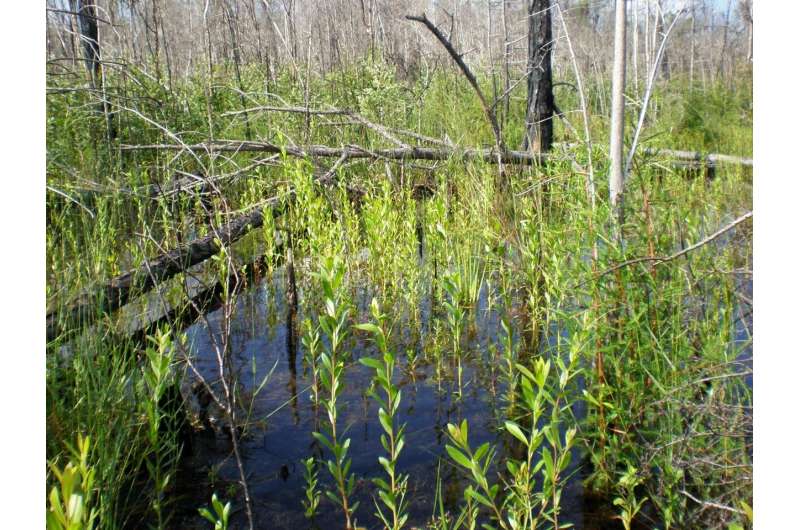Study offers insights into management of invasive paperbark trees

The paperbark tree (Melaleuca quinquenervia) was introduced to the U.S. from Australia in the 1900s. Unfortunately, it went on to become a weedy invader that has dominated natural landscapes across southern Florida, including the fragile wetlands of the Everglades.
According to an article in the journal Invasive Plant Science and Management (IPSM), one of the challenges in managing the paperbark species is its large seedbank. A single, large tree located within a dense stand can retain as many as 9 million viable seeds. The seeds are contained in capsules within the tree canopy and are released in response to disturbances, including wildfires and even the application of herbicides.
Researchers conducting a 13-year study of Florida paperbark populations say a biological control program launched by state and federal authorities has helped to slow the plant's invasive capacity. Now seedlings, saplings and large trees are continuously attacked by weevils, psyllids and galling flies.
After implementation of biological controls, there was a reduction of greater than 95 percent in the size of new populations of paperbark tree that emerged following wildfires. The biological controls have helped to reduce seedling and sapling density, slow their growth and inhibit surviving plants from achieving the capacity to reproduce for many years. One example: After a 1998 fire, the density of paperbark tree was reduced by 96.3 percent. By 2005, none of the remaining recruits had produced seed capsules.
Researchers say insights from Florida's experience can help other communities facing a paperbark invasion bring new focus to their control efforts.
"Our study shows biological controls help to suppress new growth, which can be left for a decade or more before any additional treatment is needed," said Philip Tipping, leader of the USDA-ARS Invasive Plant Research Laboratory in Davie, Florida. "As a result, land managers can prioritize removing large, reproductive trees instead of treating newly emerged populations."
More information: Philip W. Tipping et al, The influence of two wildfires and biological control agents on the population dynamics of Melaleuca quinquenervia in a seasonally inundated wetland, Invasive Plant Science and Management (2021). DOI: 10.1017/inp.2021.4
Provided by Cambridge University Press




















